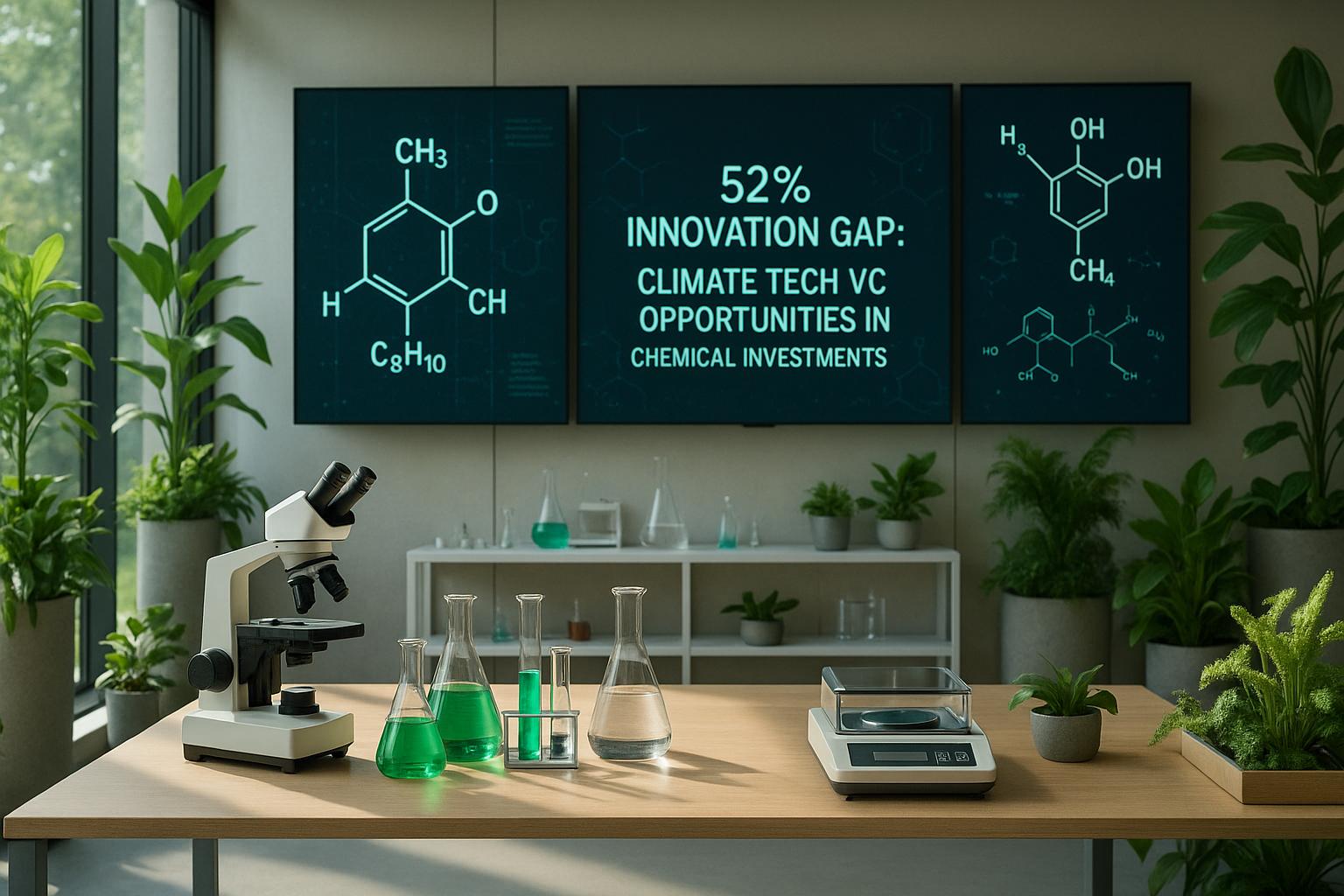7 Essential Steps to Achieve Sustainable and Compliant Supply Chains in 2024
Sustainability in the supply chain is no longer optional—it’s a legal obligation. With the Supply...
By: Johannes Fiegenbaum on 10/15/25 4:52 PM

The chemical industry is a central component of our daily lives, yet contributes significantly to global greenhouse gas emissions. With a share of 15% of industrial emissions in the US alone, the sector demonstrates both its importance and the urgent need for action. A recently published report examined the 52% innovation gap in chemical industry decarbonization. This gap represents not only a challenge but also enormous opportunities for climate tech venture capital (VC) investors in Germany and worldwide.
This article illuminates the core elements of the discussion, provides insights into investment strategies, and shows how technological innovations can transform the industry.
Chemicals form the basis of 96% of all manufactured goods and play a key role in emission-reducing technologies. At the same time, the industry is one of the most emission-intensive worldwide – both through the use of fossil fuels as energy carriers and as raw materials. According to the World Resources Institute, chemical production generates between 1.3 and 2.5 billion tons of CO2 equivalent annually, representing roughly 3-5% of global greenhouse gas emissions. Demand for chemicals is expected to continue rising, even in net-zero scenarios, as they are crucial for the production of fertilizers, plastics, and numerous other goods.
Emissions from the chemical industry arise along the entire value chain:
The goal of a climate-neutral chemical industry therefore requires solutions at all levels – from raw material selection to more efficient production methods.
A crucial part of the report is the development of a 24-lever matrix. This analyzes emission reduction levers along various chemical production pathways. The levers were divided into four main categories:
An example: Converting natural gas-fired steam crackers to electrified processes could avoid significant emissions. Similarly, the report shows that targeted measures to reduce methane leaks (e.g., in raw material supply) alone could reduce up to 26% of emissions.
Despite already available technologies, an innovation gap of 52% of emissions remains that cannot be fully covered with today's means. This substantial gap highlights the critical need for breakthrough technologies and novel approaches. The report suggests three strategic priorities for innovations:
The chemical industry therefore faces a paradigm shift: The combination of efficiency improvements and disruptive technologies will be necessary to achieve net-zero goals as outlined by the IPCC.
The report emphasizes that regional differences are crucial. Factors such as the availability of CO₂ storage, renewable energy, or recycling infrastructure significantly influence the feasibility and scalability of solutions. In Germany, with its strong focus on climate protection and energy transition, specific opportunities arise, for example through the expansion of hydrogen infrastructure or the promotion of recycling technologies. The European chemical industry, which accounts for approximately 20% of global chemical production, faces unique challenges and opportunities in this transition.
For climate tech VCs and companies in the chemical sector to utilize their role as pioneers, the following measures are crucial:
Recent analysis by Rhodium Group shows that US petrochemical sector emissions reached 306-343 million metric tons of CO2 equivalent in 2023, underscoring the scale of the challenge and the potential impact of targeted interventions.
A particularly promising trend is modularization. Instead of relying on centralized, global facilities, smaller, decentralized production plants could be located near raw material or end-use sites. This would not only reduce transport emissions but also promote flexibility and innovation.
Another central theme is circularity. Promoting recycling materials and using chemical recyclates could play a key role in reducing emissions along the entire value chain.
The transformation of the chemical industry is a challenge, but also an enormous opportunity. With a clear focus on innovation, investment, and collaboration, German companies and investors can stand at the forefront of this revolution. The time to act is now – let's rethink and reshape the chemical industry.
Source: "Webinar – Chemistry in Transition" - RMI, YouTube, Feb 26, 2025 - https://www.youtube.com/watch?v=npwXNZz-wDc
Use: Embedded for reference. Brief quotes used for commentary/review.

ESG & sustainability consultant specializing in CSRD, VSME, and climate risk analysis. 300+ projects for companies like Commerzbank, UBS, and Allianz.
More aboutSustainability in the supply chain is no longer optional—it’s a legal obligation. With the Supply...
2025 marks a turning point for the ClimateTech sector. While investments dropped to €2.3 billion in...
You can succeed as an impact startup without raising external capital. How? By strategically...